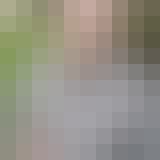With its roots in ancient cultures as early as 6,000 BC, wine has long been part of the human experience. Today, increasing worldwide interest in wine and its complexities and varieties has created an international market valued at $304 billion annually. For the learner who is just getting started in the study of wine, this course will help you take the first steps toward understanding the physiological process of wine tasting. The first module will explore types of wine and help you set up your own tasting. You’ll also begin to build a sensory vocabulary. In module 2 you will review classic wine types of the world and set up flights of specific wines. Later we’ll examine the various faults and defects that can appear in wine as well as techniques for spotting problems. In week 4 we’ll delve into the complex world of wine and food pairings, and its “seven deadly sins.” The course will culminate in a peer review project in which you will apply the knowledge and sensory techniques you have developed throughout the course to assess a specific wine.
Old World Versus New World Wines

Reviews
4.7 (503 ratings)
- 5 stars82.10%
- 4 stars11.53%
- 3 stars1.98%
- 2 stars1.19%
- 1 star3.18%
TW
Oct 6, 2020
Awesome course. After this course I feel confident speaking to my guests about wine choices and can guide them towards a great food pairing. Thanks John, you are a great professor!
LN
Aug 26, 2018
Excellent course. I tell everyone I know about it. It was was very informative, but also interactive, fun, with real-world applicability. Do yourself a favor and sign up!
From the lesson
Wine Styles
In this first module, we’ll take the first steps on our journey through the various categories of wines, starting with the flavor profiles of classic New World and Old World wines. We’ll also identify and describe flavor groups of wine and discuss sensory physiology including the visual, olfactory, textural, and taste aspects of various wines. We’ll also analyze how climate can affect the grape and wine flavor expression, and we’ll discuss the concept of "terroir". Finally, you will create a set of basic taste standards for practicing blind tasting.
Taught By

John Buechsenstein
Wine Appreciation Faculty
